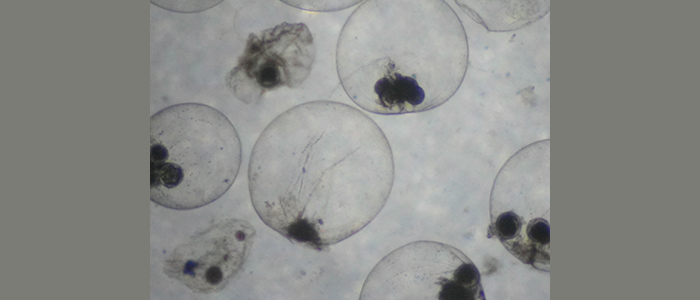||| FROM RUSSEL BARSH for KWIAHT |||
I just got off our boat; we were sampling plankton around Waldron. The “tomato soup” blooms are Noctiluca scintillans, a largely harmless dinoflagellate. Noctiluca blooms often give way to a reddish brown bloom of Heterosigma akashiwo that spreads rapidly, and can sometimes suffocate fish, but are not known to be toxic to humans. Then it all turns brown as the floating cells die and decay. (Micophoto of Noctiluca above.)
In recent years, warm winter weather has led to Noctiluca blooms in the islands as early as February. This spring has been cooler and the first Noctiluca will bloom accordingly later. But a decade ago, the earliest tomato-soup blooms were in June!
We had 145 people (mainlanders, mostly) walk out to Indian Island on Saturday: a record for any day before Memorial Day since we began collecting data on visitors over a decade ago. And a bit more of a crowd than we can easily handle! We’re speaking with the new National Monument manager about official signs advising visitors that nesting birds including Canada geese are protected by law–and when birds are finished nesting for the season, to stay on the marked Driftwood Trail.
**If you are reading theOrcasonian for free, thank your fellow islanders. If you would like to support theOrcasonian CLICK HERE to set your modestly-priced, voluntary subscription. Otherwise, no worries; we’re happy to share with you.**








